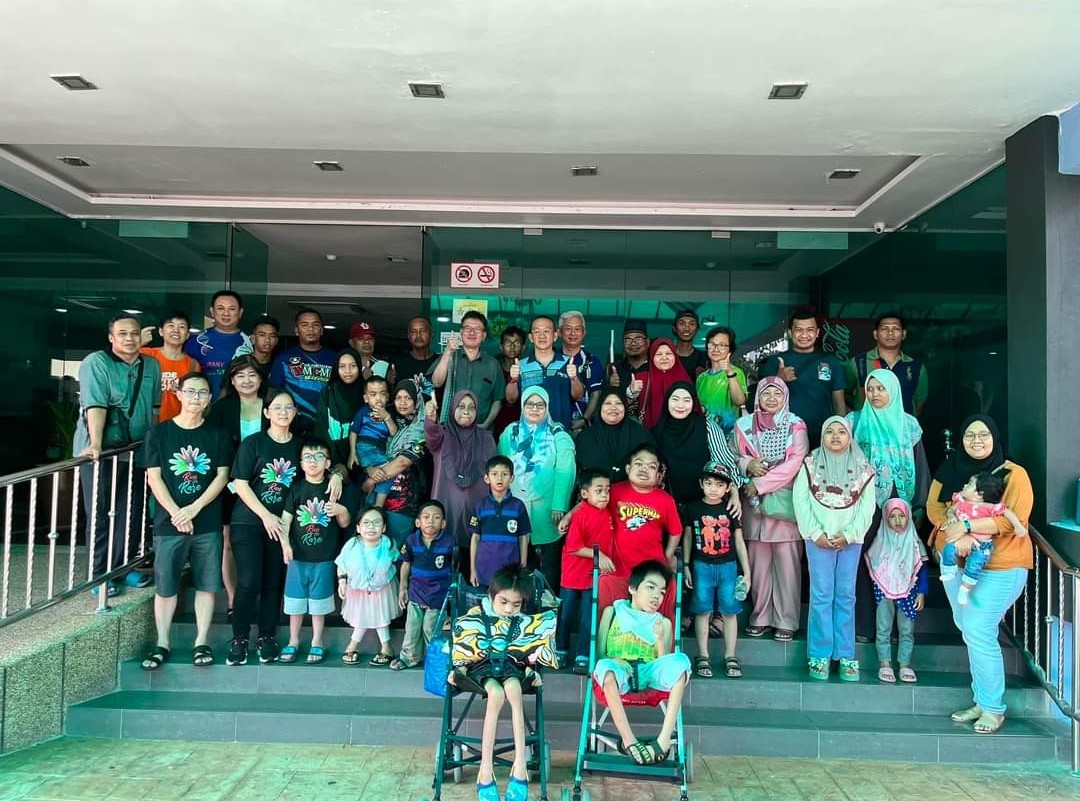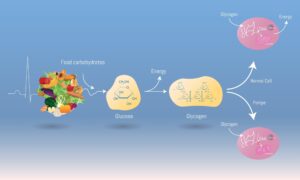WORDS MALAYSIA LYSOSOMAL DISEASES ASSOCIATION (MLDA)
 FEATURED EXPERT FEATURED EXPERTDR NGU LOCK HOCK Consultant Clinical Geneticist and Paediatrician Hospital Kuala Lumpur |
While rare diseases may seem distant to many, they are more prevalent than commonly perceived. Dr Ngu Lock Hock highlights that thousands of rare diseases collectively affect around 300 million individuals worldwide.
Among these is Pompe disease, a genetic disorder characterized by a deficiency in the enzyme acid alpha-glucosidase (GAA), leading to muscle weakness due to glycogen build-up. In Malaysia, there are only 17 diagnosed cases of Pompe disease.
What happens inside our cells when we have Pompe disease. Click on the image for a larger, clearer version.
| SYMPTOMS OF POMPE DISEASE The following symptoms often manifest when one is a baby or young child. |
|
Identifying these symptoms early is paramount, as prompt diagnosis and intervention can significantly impact disease progression.
Parents who suspect Pompe disease in their child should seek consultation with clinical geneticists, paediatricians, and neurologists.
Clinical geneticists in particular currently are available only in major public hospitals across Malaysia such as:
- Kuala Lumpur Hospital (HKL)
- University Malaya Medical Centre (UMMC)
- Universiti Sains Malaysia Hospital (USM)
- University Kebangsaan Malaysia Medical Centre (UKMMC)
- Penang General Hospital (HPP)
DIAGNOSING POMPE DISEASE
Confirming a diagnosis of Pompe disease relies on enzymatic, genetic and genomic testing.
Dried blood spot (DBS) testing can be a convenient first step in diagnosing the disease. This minimally invasive test collects a small blood sample, which is then analyzed to measure GAA enzyme activity levels, providing an initial indication of Pompe disease.
Newborn screening programs are also instrumental in detecting Pompe disease and other lysosomal storage disorders early on. By including Pompe disease in newborn screening panels, healthcare providers can identify affected infants before symptoms appear, enabling timely intervention and improving long-term outcomes.
However, the rarity of Pompe disease poses a hurdle to timely diagnosis. With only a handful of rare disease specialists in Malaysia, early intervention remains a considerable challenge. Many patients end up seeing different doctors and specialists, sometimes for years, without being correctly diagnosed.
Hence, Dr Ngu emphasizes the need for heightened awareness among healthcare professionals, as symptoms may be mistaken for other conditions.
THE FINANCIAL BURDEN OF POMPE DISEASE
“Enzyme replacement therapy (ERT), the primary treatment for Pompe disease, comes at a substantial cost, up to RM500,000 per year. This burden is particularly significant considering a newly approved ERT offers a more effective treatment option, providing relief from the symptoms of Pompe Disease by improving muscle strength, lung function and walking distance,” says Dr Ngu.
Additionally, there are the associated costs of supportive therapies as part of the holistic management of the disease, including respiratory support for patients with respiratory failure, physiotherapy, rehabilitation, speech therapy, pain management, dialysis, and more.
MAKING A DIFFERENCE, FOR THE FUTURE
Despite the challenges, there are glimpses of resilience and determination in Pompe disease patients.
Through MLDA, patients and their families find practical and emotional support, fostering a sense of community in the face of adversity.
In the meantime, the Ministry of Health is developing a rare disease policy that includes access to the latest treatment and sustainable funding. Many are hopeful that this will include measures to help with earlier diagnosis, such as improved training for front-liners to recognize symptoms of rare disease and expanded screening tests for newborns.
| For more about the Malaysia Lysosomal Disease Association (MLDA), visit their website and Facebook (links open in a new tab). |
References:
- Shafie, A. A., Supian, A., Ahmad Hassali, M. A., Ngu, L. H., Thong, M. K., Ayob, H., & Chaiyakunapruk, N. (2020). Rare disease in Malaysia: Challenges and solutions. PloS one, 15(4), e0230850. https://doi.org/10.1371/journal.pone.0230850
- Kishnani, P. S., Steiner, R. D., Bali, D., Berger, K., Byrne, B. J., Case, L. E., Crowley, J. F., Downs, S., Howell, R. R., Kravitz, R. M., Mackey, J., Marsden, D., Martins, A. M., Millington, D. S., Nicolino, M., O’Grady, G., Patterson, M. C., Rapoport, D. M., Slonim, A., Spencer, C. T., … Watson, M. S. (2006). Pompe disease diagnosis and management guideline. Genetics in medicine : official journal of the American College of Medical Genetics, 8(5), 267–288. https://doi.org/10.1097/01.gim.0000218152.87434.f3




